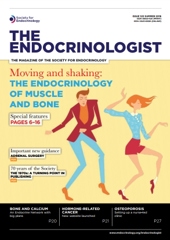We have seen quite striking changes in the management of osteoporosis over the last two decades. 25 years ago, the only effective treatment in use was hormone replacement therapy (HRT).
We no longer use HRT for postmenopausal osteoporosis, because the risks outweigh the benefits. Fortunately, since the advent of the bisphosphonate etidronate, several other treatments have also been licensed for use in osteoporosis (see Table). We are guided in the use of these agents by NICE guidance (CG146, TA160, TA161, TA204).
Pros and cons of bisphosphonates
In practice, we often start with an oral bisphosphonate. The most commonly used is alendronate, given at a dose of 70mg once a week. This treatment has proved to be effective and safe at reducing the risk of fractures in patients with osteoporosis.
We have become aware that such treatment can be associated with long term adverse effects, such as atypical femur fractures and, more rarely, osteonecrosis of the jaw. As a result, the use of drugs such as alendronate has changed, and we often recommend a ‘drug holiday’ after their use for 5 years, unless the bone mineral density (BMD) is still in the osteoporosis range or there have been low trauma fractures (such as vertebral fractures) whilst on treatment. If we continue, we still stop after 10 years of treatment.
Alternative approaches
Not all patients can tolerate oral bisphosphonates as they can irritate the oesophagus. It is fortunate that we have drugs that can be given parenterally that are at least as effective, namely zoledronic acid (given as a 5mg annual infusion) or denosumab (a RANKL inhibitor given 6-monthly as a subcutaneous injection).
We can also use anabolic treatment (now only teriparatide as intact parathyroid hormone (PTH) is no longer available) in severe osteoporosis (that is, in patients with very low bone density with vertebral fractures who are unable to tolerate oral bisphosphonates). Teriparatide is a particularly useful treatment in glucocorticoid-induced osteoporosis, but the treatment duration is limited to 2 years and its use involves a daily subcutaneous injection. There have been recent publications in which teriparatide and denosumab have been given together and the effects on BMD have been particularly large.
New drug development
Advances in our understanding of bone biology have allowed the development of new drugs, particularly ones that are anabolic.
Several treatments with new mechanisms of action may be licensed soon. These include an anti-sclerostin antibody, romosozumab, that stimulates bone formation for up to 6 months. The highest dose increases spine and hip BMD by about 11% and 4% respectively over just 12 months of administration.1 Preliminary reports from FRAME (the FRActure study in postmenopausal woMen with ostEoporosis) indicate that 1 year of treatment reduces the risk of vertebral fracture by 75%, but with no significant reduction in risk of non-vertebral fractures.2 Complete results from ongoing trials will determine whether short term treatment with an anti-sclerostin antibody offers greater anti-fracture efficacy than denosumab or zoledronic acid.
Abaloparatide, an analogue of PTH-related peptide, binds to the PTH 1 receptor, like teriparatide. It has been used for 18 months in the doses intended for use in practice, and it increases BMD of the spine and hip to a somewhat greater degree than teriparatide.3 In the ACTIVE trial (Abaloparatide Comparator Trial in Vertebral Endpoints), there was an 86% reduction in risk of vertebral fractures and 43% decrease in risk of non-vertebral fractures.4 Full details about its safety have not been published, but, if approved for use, abaloparatide may be a new option for treatment of patients at high risk of fracture. It has the advantage of not requiring storage in a refrigerator.
Odanacatib inhibits cathepsin K and hence the resorption of collagen matrix, but permits formation of bone and, perhaps, a more favourable bone balance, with a modest decrease in resorption and reduced inhibition of formation.5 LOFT (the Long-Term Odanacatib Fracture Trial) found a 47% decrease in risk of hip fracture and 54% decrease in risk of vertebral fractures, along with rare instances of atypical femoral fractures and occasional morphea-like skin lesions.6 The full safety profile of odanacatib is still being analysed.
Thus a number of treatments are on the horizon, and could further benefit our patients with osteoporosis.
Richard Eastell
Academic Unit of Bone Metabolism, Metabolic Bone Centre, Northern General Hospital, Sheffield
REFERENCES
- McClung MR et al. 2014 New England Journal of Medicine 370 412–420.
- Levin J 2016 Fierce Biotech http://bit.ly/1qGaeqJ.
- Leder BZ et al. 2015 Journal of Clinical Endocrinology & Metabolism 100 697–706.
- Tucker ME 2015 Medscape http://wb.md/1WgYSFA.
- Eisman JA et al. 2011 Journal of Bone & Mineral Research 26 242–251.
- Merck 2014 Merck Newsroom http://bit.ly/1SggPmd.





